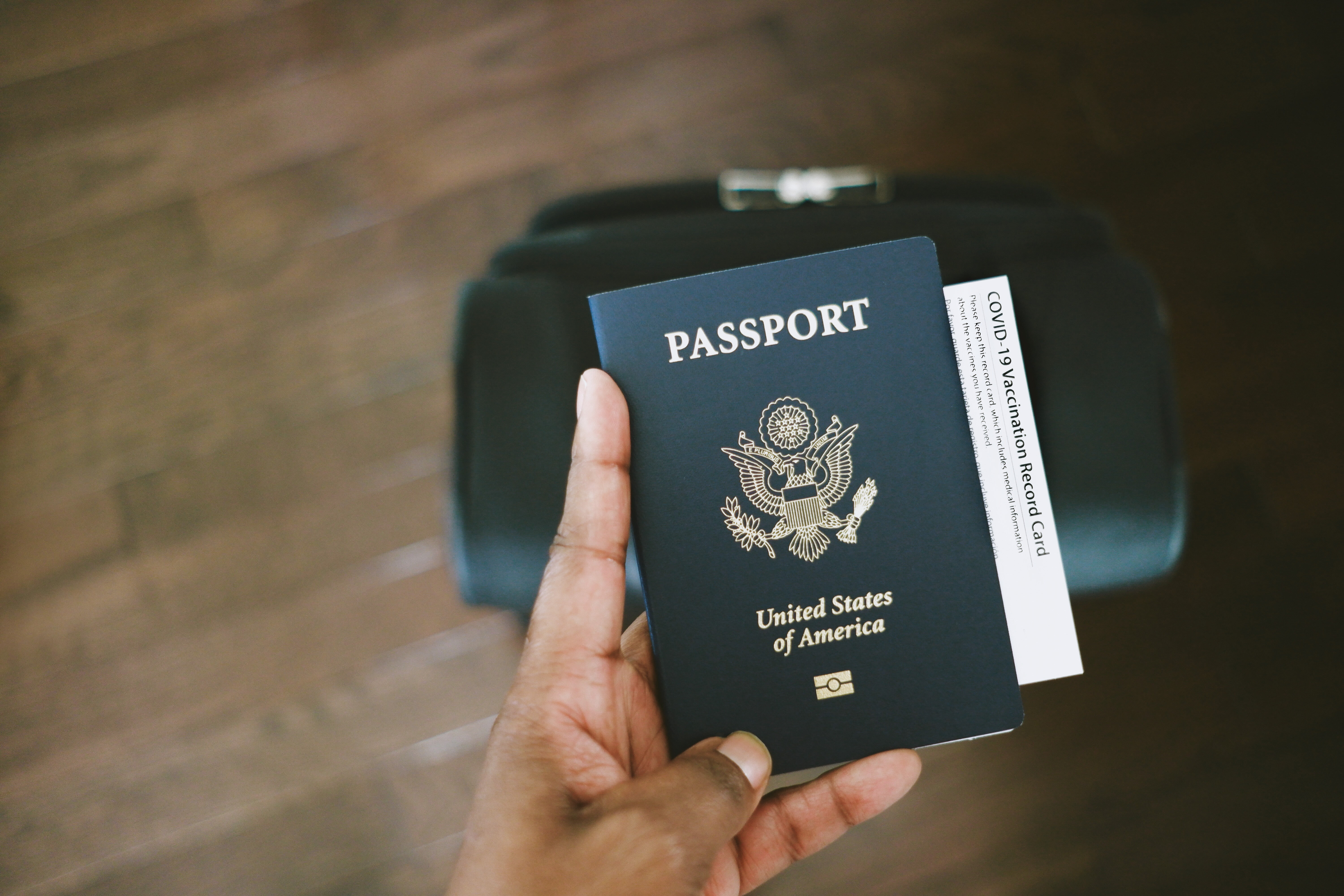Passport photos: those universally unflattering images that capture us at our most, shall we say, neutral. It’s a common experience to be sternly instructed not to smile when getting your picture taken for this crucial travel document. You might even wonder, as many do, why this seemingly simple request to show a little happiness is forbidden. My own recent passport renewal involved a postal worker firmly telling me “no smiling!” resulting in a photo that, to put it mildly, lacked any semblance of joy.
 A woman with a neutral expression is having her passport photo taken by a postal worker. Text overlay reads 'Don't say 'cheese' when you take your passport photo.
A woman with a neutral expression is having her passport photo taken by a postal worker. Text overlay reads 'Don't say 'cheese' when you take your passport photo.
But what’s the real reason behind the no-smile passport photo rule? Is it just bureaucracy gone mad, or is there a genuine purpose to this seemingly odd regulation? The answer, as it turns out, lies in a blend of technology and international security protocols.
Decoding the “Neutral Expression” Mandate
Interestingly, in the United States, there isn’t an explicit ban on smiling in passport photos. The U.S. Department of State guidelines stipulate that photos must depict a “neutral facial expression with both eyes open and mouth closed.” Applicants are also required to look straight at the camera and directly face the lens.
According to a State Department spokesperson, “An applicant actually can smile in their passport photo, as long as both of their eyes are open and their mouth is closed in the photo.” So, technically, a slight, closed-lip smile might be permissible. However, the emphasis is clearly on a neutral demeanor.
Forget about beaming grins or toothy smiles. The real reason behind this preference for a serious expression boils down to facial recognition technology and the need for secure border control.
Karolina Turowska, an expert in biometric photography and travel at Passport-Photo.Online, explains, “The main reason for banning smiling is the introduction of facial recognition software at airports and other border control checkpoints.”
Many international borders now utilize automated systems that rely on facial recognition to scan and verify travelers’ identities. While humans are adept at recognizing faces across a range of expressions, computers require a more standardized approach.
Turowska elaborates, “Algorithms don’t work as we do. To compare a 3D face with a 2D passport photo, they need to pinpoint and measure the users’ facial features. It includes the distance between the pupils, ears, nose and mouth, the mouth’s and the eyes’ width, and many others. Smiling can make it harder, as it alters facial proportions.” A smile, especially a broad one, can distort key facial measurements that these algorithms rely on for accurate identification.
Katy Nastro, a travel expert and spokesperson for Going, reinforces this point, noting that the rules are less about banning smiles outright and more about preventing expressions that hinder facial recognition. “Smiling wide with teeth makes it harder to verify eye color and general face shape by passport officials ― namely biometric technology ― who need to confirm your identity. With a majority of places using facial recognition technology at border controls, this is even more important as current biometric tech often has a hard time if points on the face are shifted.”
A Global Standard for Serious Faces
The restriction on smiling in passport photos isn’t unique to the United States. “Avoiding smiling in passport photos is a universal rule for most countries,” states Turowska. While the specific interpretation of “neutral expression” might vary slightly between nations due to different facial recognition software, the underlying principle remains consistent.
For instance, France has taken an even stricter stance, with official requirements seemingly disallowing even neutral expressions that show slight upturning of the mouth corners, as reported by The Guardian.
The International Civil Aviation Organization (ICAO) plays a crucial role in establishing these global standards. As the State Department spokesperson mentioned, the ICAO “sets global standards and recommended practices for travel documents,” including guidelines for facial expressions in passport photos. These international standards ensure consistency and facilitate smoother travel across borders.
The rationale behind these guidelines is clear: “Photos with exaggerated expressions can make it more difficult to readily identify the passport holder,” the spokesperson explained. The aim is to have passport photos that are as consistent and easily recognizable as possible, regardless of the individual’s typical expressions. Interestingly, the US has had these types of photo requirements “for decades,” demonstrating the long-standing need for standardized passport photos.
The evolution of facial recognition technology in the early 2000s further solidified these rules. Around 2004, countries like the U.S. and the UK updated their passport photo regulations to align with technological advancements.
Nastro summarizes, “The face has always been the standard for biometric identification by the International Civil Aviation Organization, but because computers are limited in specific facial recognition capabilities, a neutral expression was deemed the gold standard.”
However, it’s worth remembering that these stringent rules are relatively recent in the history of passports. The concept of the internationally standardized passport system we use today only emerged in 1920, following World War I.
Madison Blancaflor, a senior editor at The Points Guy, points out the historical perspective: “Passport photos weren’t always as strict as they are today. When passport photos first started to be used, there were very limited ― if any ― regulations to what the photos included. You can find some very interesting historical examples online of old passports with people playing instruments or wearing distracting hats. However, over the years more regulations have been put into place to heighten security efforts.”
The Consequences of a Carefree Smile
So, what happens if you decide to disregard the neutral expression advice and submit a passport photo featuring a wide, toothy grin? According to Nastro, “The most common reason for a passport processing delay is improper photos.” Even a subtle smile might be deemed unacceptable, leading to complications. “Even the best of smiles can get turned down for not meeting requirements set forth on the state department website. It’s best to not risk it and take a photo with a neutral expression, especially if you want it processed as quickly as possible.”
The State Department spokesperson confirms that a smiling photo will lead to delays. “If you decide to smile widely and show off your pearly whites in your photo, the passport agency will delay your application and request a new photo in keeping with the stated requirements.”
If your photo is rejected, you will receive a notification, typically a letter or email, with instructions on how to resubmit an acceptable photo. Blancaflor cautions about the potential for significant delays if you don’t act promptly: “If you’re unable to provide a photo that meets their standards by the deadline given, your passport application may remain in ‘on hold’ limbo forever or be rejected.”
Beyond smiles, passport photo rules extend to other aspects. Eyeglasses are generally prohibited unless they are medically necessary, in which case a doctor’s note is required. Hats and head coverings are also not allowed unless they are worn for religious reasons and are a customary part of daily public attire, again requiring a signed statement.
Turowska adds further details on prohibited expressions: “Not only is smiling prohibited: Applicants cannot tighten their mouths, frown or crinkle.” The aim is a completely neutral and relaxed facial expression.
For comprehensive guidelines, it’s always best to consult the State Department website for details on lighting, photo retouching, background requirements, and other specifications.
There is a slight leniency for children. Turowska points out, “The stringent rule regarding smiling is somewhat more lenient for children since having them maintain a neutral facial expression is challenging. The smile cannot impair the recognition of their facial features; however, as long as the child faces the camera and has his eyes open, the passport authorities should accept a smiling photo.” The focus remains on clear facial features and open eyes, but a little smile is less likely to cause rejection for young children.
In conclusion, while it might feel unnatural to suppress a smile for your passport photo, the reasons are rooted in practical technology and international security standards. By adopting a neutral expression, you ensure your photo is compatible with facial recognition systems, helping to streamline border crossings and avoid potential delays with your passport application. So, next time you’re getting your passport photo taken, remember it’s not about being unfriendly, it’s about ensuring a smooth journey ahead.
